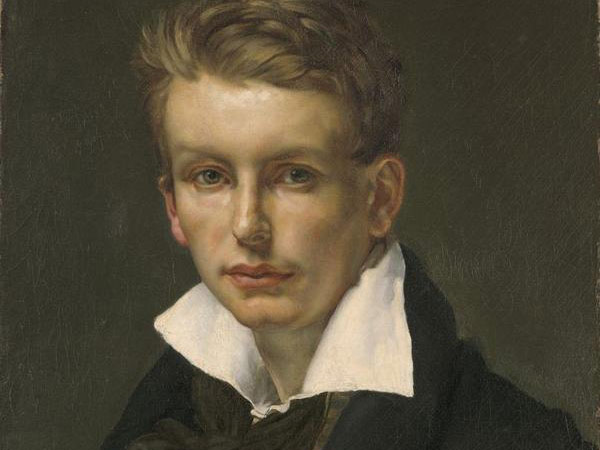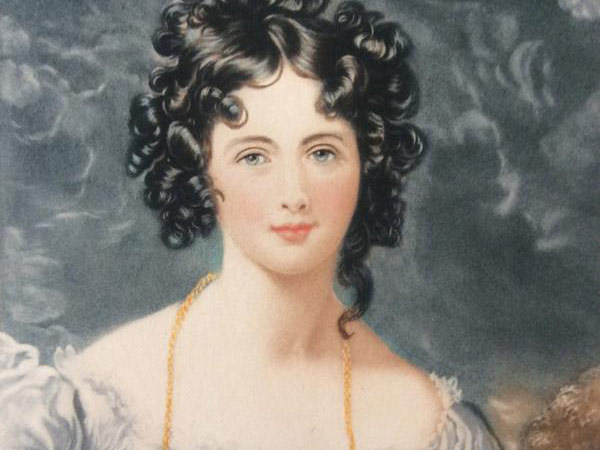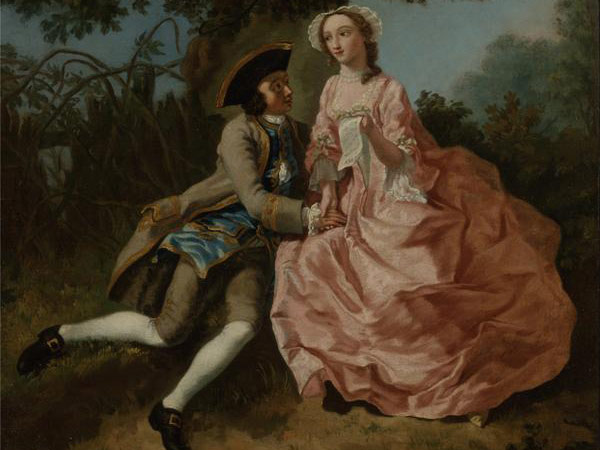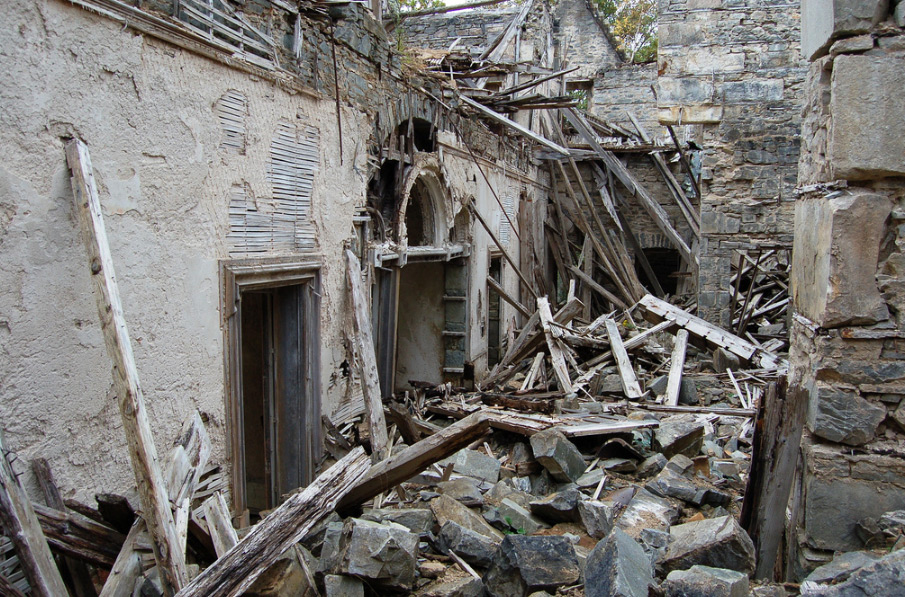Membership
Your support helps us employ four dedicated Conservation Advisers who travel across England and Wales giving expert advice on planning applications affecting Georgian buildings and gardens. Quite often, especially with buildings listed Grade II, we are the only voice speaking up for a threatened part of our heritage. Membership also includes:
- Annual Georgian Group Journal
- Twice-yearly magazine
- Access to member events including lectures, walks and country visits
Young Georgian

Annual membership for under-35s.
The Young Georgians organise additional events.
Individual

Individual membership is for one person.
Annual and lifetime membership options are available.
Joint

Joint membership is for two people.
Annual and lifetime membership options are available.
Events
Featured
No Events on The List at This Time
Upcoming
october
Event Details
£25, Afternoon Orleans House Gallery stands in the grounds of the original Orleans House, a site comprising approximately six acres with natural woodland and parkland used for recreational activities. The house
Event Details
£25, Afternoon
Orleans House Gallery stands in the grounds of the original Orleans House, a site comprising approximately six acres with natural woodland and parkland used for recreational activities. The house took its name from Louise Phillipe Duc d’Orleans (1773-1850), later King of the French, who lived there from 1815 until 1817 during his exile from France. The property was originally built in 1710 for James Johnston, Joint Secretary of State for Scotland under William III by John James. The baroque Octagon Room, Grade I listed, was constructed around 1720 and designed by James Gibbs. It features fine gilded decorative plasterwork by distinguished stuccatori (plasterers), Giuseppe Artari and Giovanni Bagutti. The HLF funded ‘Transforming Orleans House’ project completed was completed in 2018. The tour will be led by Ayaka Takaka of Donald Insall Architects.
This visit is for members’ only.
Please read our Terms and Conditions before booking.
If tickets have sold out for this event, please email members@georgiangroup.org.uk to be added to the waiting list.
Image: Morley Von Sternberg
Time
(Tuesday) 2:00 pm
Location
Orleans House Gallery
Get tickets for this event
Book NowEvent Details
£15 members/£18 non-members In 1789, as revolution broke out in France, court life revived in England, with grandiose celebrations for George III’s recovery. A thousand or more would attend levers or
Event Details
£15 members/£18 non-members
In 1789, as revolution broke out in France, court life revived in England, with grandiose celebrations for George III’s recovery. A thousand or more would attend levers or drawing rooms , causing ‘crowding and squeezing’, ‘pushing and scrambling’ in St James’s Palace. Lines of courtiers’ carriages stretching from beyond Oxford street attracted admiring spectators. in 1821 his friend Walter Scott described the coronation of George IV as ‘beyond measure magnificent’. Governments considered control of the royal household essential, for example in the regency crises of 1788 and 1811–12, and the Bedchamber Question of 1839. The Tory leader Robert Peel refused to be Prime Minister, when the Queen would not dismiss her Whig ladies in waiting. His rival lord Melbourne went almost every day to court, always sitting beside the Queen at dinner. For her part the Queen believed: ‘I must be surrounded by my Court. I cannot keep alone’. Britain remained a court society as well as a parliamentary monarchy.
The talk starts at 6.30pm, doors open from 6.15pm.
Georgian Group members are eligible for a discount on their ticket by entering GGMEMBER at the checkout.
Please read our Terms and Conditions before booking.
If tickets have sold out for this event, please email members@georgiangroup.org.uk to be added to the waiting list
Time
(Tuesday) 6:30 pm - 7:30 pm
Location
6 Fitzroy Square
Get tickets for this event
Book NowEvent Details
£15 members/£18 non-members The Greening family flourished throughout the 18th century. With an impressive nursery, on the Isleworth/Brentford border, they supplied plants, trees and bulbs and undertook landscape design and maintenance
Event Details
£15 members/£18 non-members
The Greening family flourished throughout the 18th century. With an impressive nursery, on the Isleworth/Brentford border, they supplied plants, trees and bulbs and undertook landscape design and maintenance contract for the royal family and wealthy clients. No business archive survives but payments for their work appear in the records of numerous estates in England and Wales. Val Bott’s study of the nursery gardeners in parishes along the Thames valley west of London has been shared in short essays on individual families. This wider study provides the context for understanding and recognising the significance of the Greenings.
The talk starts at 6.30pm, doors open from 6.15pm.
Georgian Group members are eligible for a discount on their ticket by entering GGMEMBER at the checkout.
Please read our Terms and Conditions before booking.
If tickets have sold out for this event, please email members@georgiangroup.org.uk to be added to the waiting list
Time
(Tuesday) 6:30 pm - 7:30 pm
Location
6 Fitzroy Square
Get tickets for this event
Book Nownovember
Event Details
£5 members/£7 non-members The 1.2 million modern annual visitors to London Zoo today, regardless of extensive modernisation, visit a zoological garden laid out within original boundaries of the early 19th century,
Event Details
£5 members/£7 non-members
The 1.2 million modern annual visitors to London Zoo today, regardless of extensive modernisation, visit a zoological garden laid out within original boundaries of the early 19th century, amidst the harmonious surrounds of Regent’s Park. The footprint of Decimus Burton’s designs, despite the demolition of many of his buildings, shaped the character of both London Zoo and zoological gardens throughout the world. Oliver Flory will focus on the topography and the design of the early gardens up to the year 1837 and the construction of Burton’s giraffe house, perhaps the most famous zoo building in the world.
The talk starts at 6.30pm, doors open from 6.15pm.
Georgian Group members are eligible for a discount on their ticket by entering GGMEMBER at the checkout.
Please read our Terms and Conditions before booking.
If tickets have sold out for this event, please email members@georgiangroup.org.uk to be added to the waiting list
Time
(Tuesday) 6:30 pm - 7:30 pm
Get tickets for this event
Book NowEvent Details
£35 Come and spend an autumn morning exploring the history and architecture of the streets and gems of Clerkenwell. Clerkenwell was one of London’s first suburbs when it became a fashionable quarter
Event Details
£35
Come and spend an autumn morning exploring the history and architecture of the streets and gems of Clerkenwell.
Clerkenwell was one of London’s first suburbs when it became a fashionable quarter for wealthy inhabitants escaping the City in the 17th century, before it later became known for its over-crowded slums and radical activities. In recent decades, it has become a heartland for the creative industries, in disused craft workshops, warehouses and markets, and the area will become the new home for the Museum of London.
On this autumn amble, we will explore revolutionaries (Wat Tyler, Stalin and Lenin), monasteries (Carthusian), residences (Hercule Poirot), prisons (the Clerkenwell House of Detention), burial sites (Crossrail excavations of Black Death victims) and one of the City’s most hidden Churches, St Bartholomew-the-Less and its links with William Hogarth.
The Walk will be led by Meg Ryder, a Londoner who hails from Pimlico. Meg is a qualified solicitor who left the law to establish bespoke walking tours in London to follow her passion for all things historical, artistic and architectural. Meg has a Masters in History from Edinburgh University, and studied History of Art and Architectural History in Rome.
We will meet at 10.45am for a 11am start. This event is for members only.
If tickets have sold out for this event, please email members@georgiangroup.org.uk to be added to the waiting list.
Time
(Thursday) 11:00 am - 1:00 pm
Get tickets for this event
Book nowEvent Details
£5 members/£7 non-members The Nelson Garden was created in the late 18th century as a town garden in the centre of Monmouth, a place that went on to create a prosperous
Event Details
£5 members/£7 non-members
The Nelson Garden was created in the late 18th century as a town garden in the centre of Monmouth, a place that went on to create a prosperous Georgian character in the first part of the 19th century. The walled garden acquired its name sometime after the visit by Nelson in 1802 and, today, the seat in which Nelson sat is preserved within a neo-classical pavilion. The garden also retains a rare surviving example of an 18th century hot wall.
This talk will look at the significance of the garden, the associations with Nelson and the ambitious restoration project completed by the Nelson Garden Preservation Trust.
The talk starts at 6.30pm, doors open from 6.15pm.
Georgian Group members are eligible for a discount on their ticket by entering GGMEMBER at the checkout.
Please read our Terms and Conditions before booking.
If tickets have sold out for this event, please email members@georgiangroup.org.uk to be added to the waiting list
Time
(Tuesday) 6:30 pm - 7:30 pm
Get tickets for this event
Book NowEvent Details
Thursday 28th November, 1pm. £9.50 for Georgian Group members. The Georgian Group have partnered with the York Georgian Society to invite you to a fascinating visit to Cannon Hall to learn
Event Details
Thursday 28th November, 1pm. £9.50 for Georgian Group members.
The Georgian Group have partnered with the York Georgian Society to invite you to a fascinating visit to Cannon Hall to learn more about the roof repair project at this outstanding, Grade-II* listed property.
Home of the Spencer-Stanhope family, Cannon Hall was built in the early 18th century, possibly by York architect John Etty, with joinery by William Thornton. In the 1760s John Carr of York added the wings and contributed to interior finishes.
Today, Cannon Hall is a museum, park and gardens managed by Barnsley Council. Outstanding fine and decorative arts collections include paintings, drawings, ceramics, glass, metalwork and furniture. There is also a programme of temporary exhibitions.
Join us on a visit to Cannon Hall’s rooftop, to witness the essential repair works being undertaken. Following a generous Museum Estate and Development Fund (MEND) grant, existing failing roofs and skylights will be replaced, stonework repaired, ventilation improved and stonework repointed. These repairs will safeguard the house and its collections for future generations.
Project Leaders Donald Insall Associates will give a tour of the live works to strip the roof, allowing us to inspect the 18th century joinery.
Tickets are being sold for this event by the York Georgian Society.
Time
(Thursday) 1:00 pm - 3:00 pm
Get tickets for this event
Book Nowdecember
Event Details
£15 members/£18 non-members We tend to think of cemeteries as Victorian, but their origins lie much earlier. There are two key phases: first, urban growth around 1700 demanded new burial provision
Event Details
£15 members/£18 non-members
We tend to think of cemeteries as Victorian, but their origins lie much earlier. There are two key phases: first, urban growth around 1700 demanded new burial provision and a pioneering wave of Anglican burial grounds started to join the cemeteries of dissenters and Jews. Later, influenced by Père Lachaise, new cemeteries were opened by private enterprise from the 1820s. The Georgian churchyard tradition supplied many of the tomb types, ensuring a strong element of continuity. The resulting funeral landscapes like Kensal Green (opened 1833) represent some of the key achievements of William IV’s reign. This talk is based on a forthcoming book on British cemeteries, co-written with Brent Elliott, to be published by Liverpool University Press.
The talk starts at 6.30pm, doors open from 6.15pm.
Georgian Group members are eligible for a discount on their ticket by entering GGMEMBER at the checkout.
Please read our Terms and Conditions before booking.
If tickets have sold out for this event, please email members@georgiangroup.org.uk to be added to the waiting list
Time
(Tuesday) 6:30 pm - 7:30 pm
Location
6 Fitzroy Square
Get tickets for this event
Book Nowwed11dec2:00 pmWarwickshire Visit: Ragley HallVisit to Ragley Hall 2:00 pm Ragley HallBook Now
Event Details
£25, Afternoon As the ancestral home of the 9th Marquess & Marchioness of Hertford, Ragley Hall was designed for Lord Conway by Roger or William Hurlbut circa 1677 and modified by
Event Details
£25, Afternoon
As the ancestral home of the 9th Marquess & Marchioness of Hertford, Ragley Hall was designed for Lord Conway by Roger or William Hurlbut circa 1677 and modified by Robert Hooke in 1678. The east or entrance facade is dominated by a full-height portico supported on Ionic columns which was added by James Wyatt in 1778. The park landscaped by Capability Brown in 1757, with late 19th Century formal gardens laid out by Robert Marnock.
This visit is for members’ only.
Please note this visit has been rescheduled from Wednesday 13th November
Please read our Terms and Conditions before booking.
If tickets have sold out for this event, please email members@georgiangroup.org.uk to be added to the waiting list.
Image: Wiki Commons: CC BY-SA 4.0
Time
(Wednesday) 2:00 pm
Location
Ragley Hall

